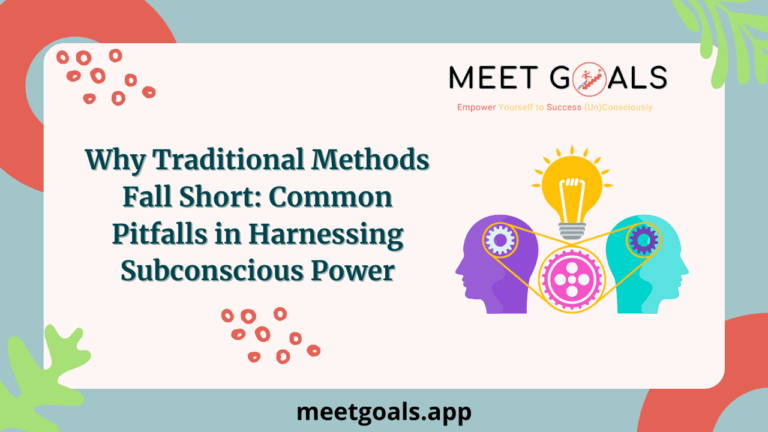The pursuit of personal transformation and mastery over the untapped potential of the subconscious mind is a pursuit as old as time itself. The market is inundated with books, courses, and seminars promising the secret recipe to accessing and harnessing the power of the subconscious. Despite the widespread availability of these resources, many individuals find themselves trapped in a cycle of temporary highs followed by a return to old patterns. In this analysis, we’ll explore why traditional goal-setting methods often fall short and examine the common pitfalls in harnessing subconscious power.
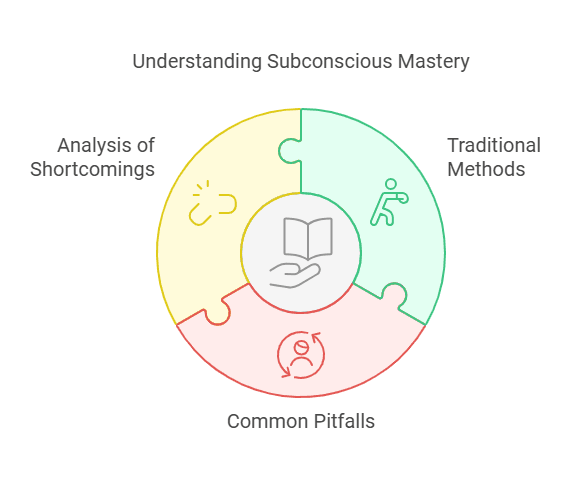
Why Traditional Goal-Setting Expectation vs. Reality
A significant reason traditional goal-setting approaches to tapping into the subconscious mind falter is the disconnect between expectations set by these methods and the complex reality of subconscious dynamics. Many resources oversimplify the process, offering a one-size-fits-all solution to what is a deeply personal journey fraught with individual nuances.
Analysis of Why Many Books and Courses Fail to Deliver Lasting Results
Over-Promise and Under-Deliver
A multitude of books and courses promise quick-fix solutions to accessing the depths of the subconscious mind. They claim that with just a few easy steps, anyone can unleash their untapped potential. However, the subconscious mind is not a switch to be flipped but rather a complex network to be navigated. This mismatch in promises leads to unmet expectations and disillusionment.
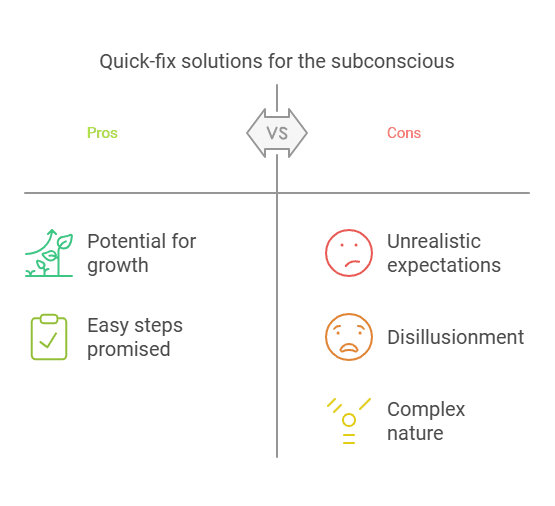
Lack of Personalization
traditional goal-setting methods typically offer generalized strategies that fail to account for the individual’s unique background, experiences, and belief systems. Since the subconscious is shaped by a personal history that varies drastically from one person to another, cookie-cutter approaches are often ineffective.
Surface-Level Engagement
Many approaches concentrate on surface-level engagement with the subconscious, such as temporary positive affirmations or visualization exercises. While these can be beneficial, they don’t address underlying issues or provide the tools for sustainable change. Lasting transformation requires a more profound, ongoing engagement with the subconscious layers.
Discussion on Common Misconceptions and Incomplete Approaches
The Misconception of Effortless Success
A common misconception is that harnessing the subconscious is an effortless pathway to success. This portrays the process as one where conscious effort is almost redundant. In reality, it requires persistence, self-awareness, and dedication. Without these, any progress made is likely to be fleeting.
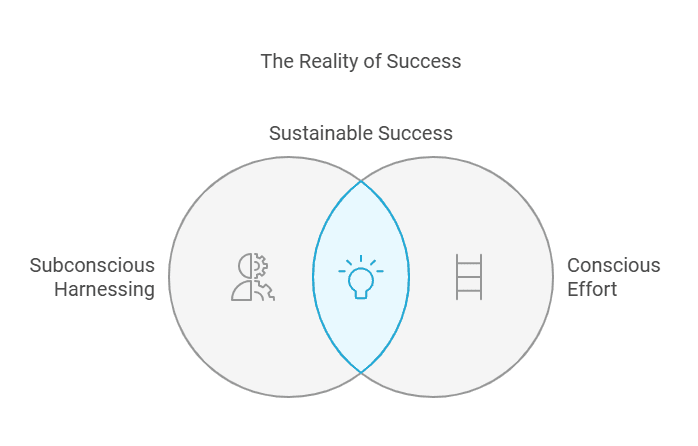
One-Time Fix Fallacy
The idea that a single breakthrough session or epiphany can resolve deep-seated patterns is another incomplete approach. It promotes the belief that years of subconscious programming can be undone instantaneously. Transformation is a process, and the subconscious mind requires repeated reinforcement and consistent practice to reprogram.
The Power of Positive Thinking Oversimplification
Positive thinking is often heralded as the panacea for accessing subconscious power. While a positive outlook is undoubtedly beneficial, it is not the sole answer. It must be part of a broader strategy that includes confronting and resolving negative emotions and limiting beliefs.
Ignoring the Shadow Self
traditional goal-setting methods often overlook the shadow self—the aspects of our personality we deem unworthy or choose to ignore. Failing to acknowledge and integrate the shadow self into our conscious being leaves a wealth of subconscious power untouched and potential growth unrealized.
Lack of a Holistic Approach
Finally, many traditional avenues fail to utilize a holistic approach that considers the mind, body, and spirit. Accessing the subconscious requires a balance between mental exercises and overall well-being, including physical health and emotional intelligence.
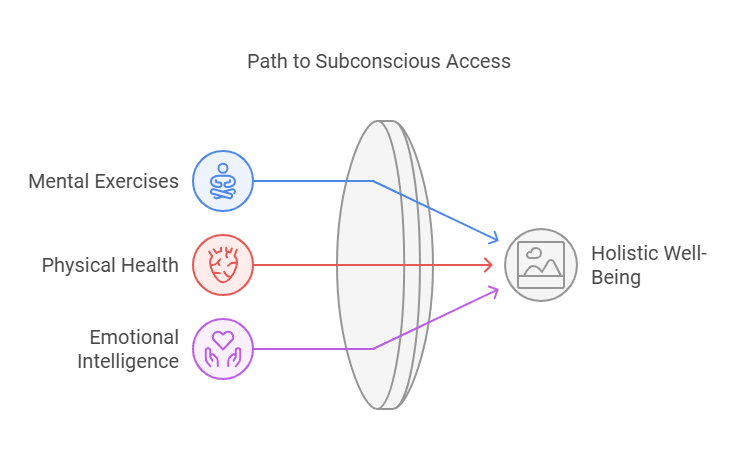
Moving Beyond Traditional Methods
To truly harness the power of the subconscious mind, we must look beyond traditional methods and seek more comprehensive, personalized, and nuanced approaches. This might include:
Personal Therapy: Engaging in one-on-one therapy to delve into individual history and subconscious programming.
Integrated Practices: Combining various methods such as cognitive-behavioral techniques, meditation, journaling, and mindfulness to create a personalized toolbox for subconscious exploration.
Long-Term Commitment: Understanding and embracing the journey towards subconscious mastery as a life-long commitment rather than a brief endeavor.
Continuous Learning: Remaining open to new insights and adapting one’s approach to subconscious work as new understandings of the self emerge.
Community Support: Leveraging the power of community to provide support, accountability, and shared learning experiences.
Conclusion
As we delve into the work of harnessing our subconscious power, it becomes clear that traditional methods often fall short due to their one-size-fits-all promises, superficial engagement, and lack of personalization. By recognizing these pitfalls and adopting a more tailored, holistic, and sustained approach, we position ourselves to make meaningful strides in tapping into the profound capabilities of our subconscious mind.
The journey to unlocking the hidden power within is not a quick sprint but a marathon, demanding not just optimism but patience, introspection, and a relentless pursuit of personal growth. When we commit to a more authentic, comprehensive exploration of the subconscious, the potential for awakening and transforming our reality becomes not just a promise but a living, breathing experience.

